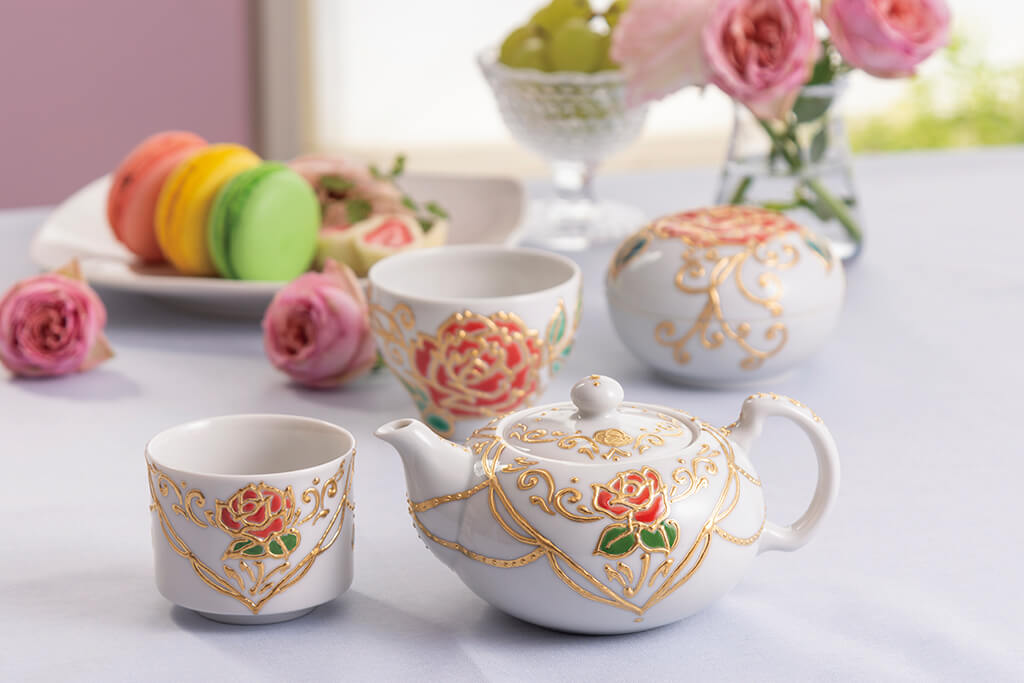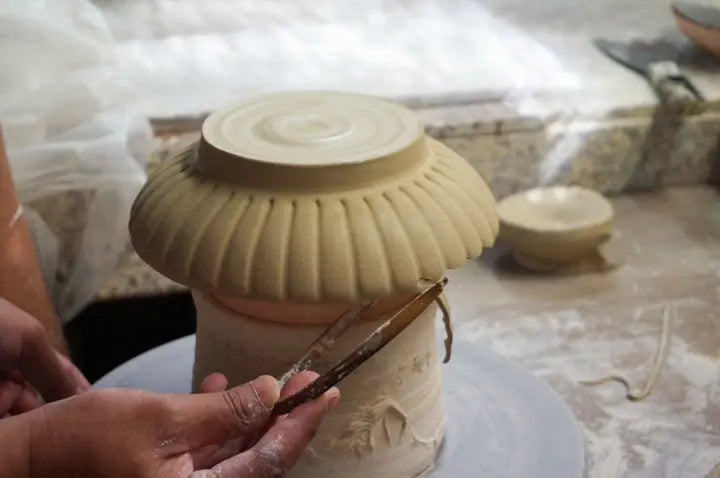Of the five Kutani colors, only red is able to draw particularly fine lines," says Reiko. Kutani Gosai refers to the five colors of green, yellow, purple, dark blue, and red that are representative of Kutani ware. Green, yellow, purple, and navy blue can be painted thickly, and when fired, they become glassy and transparent like colored glass. However, due to their nature, it is difficult to draw thin, delicate lines with these four colors. Red, on the other hand, is not as thick as the other four colors and does not change to glassy quality. However, it is capable of drawing thin and beautiful lines.























